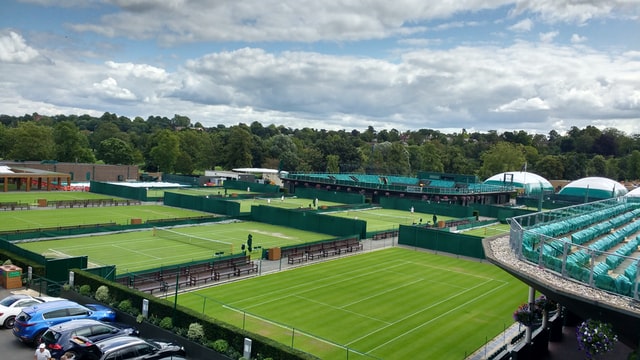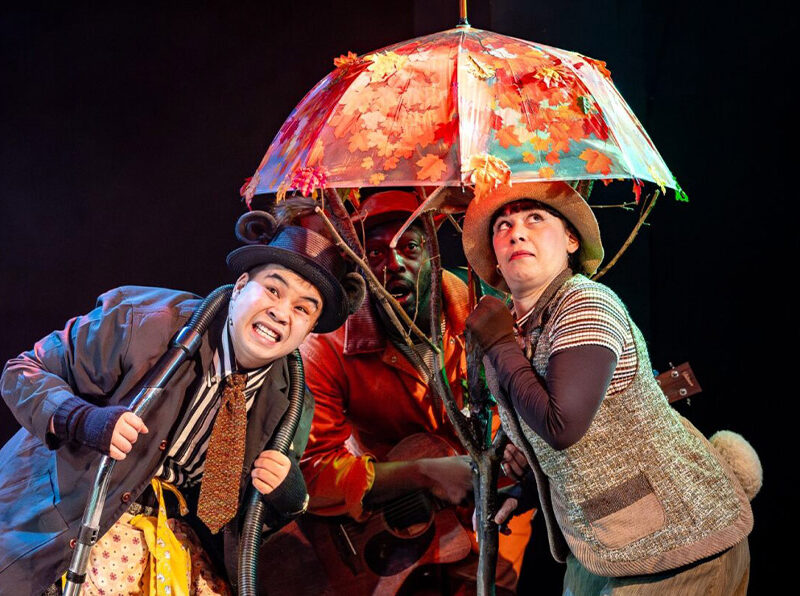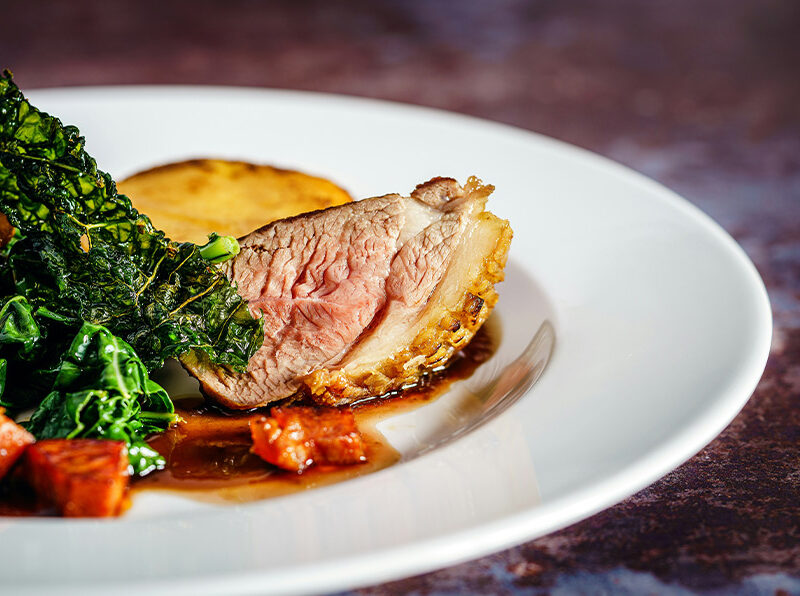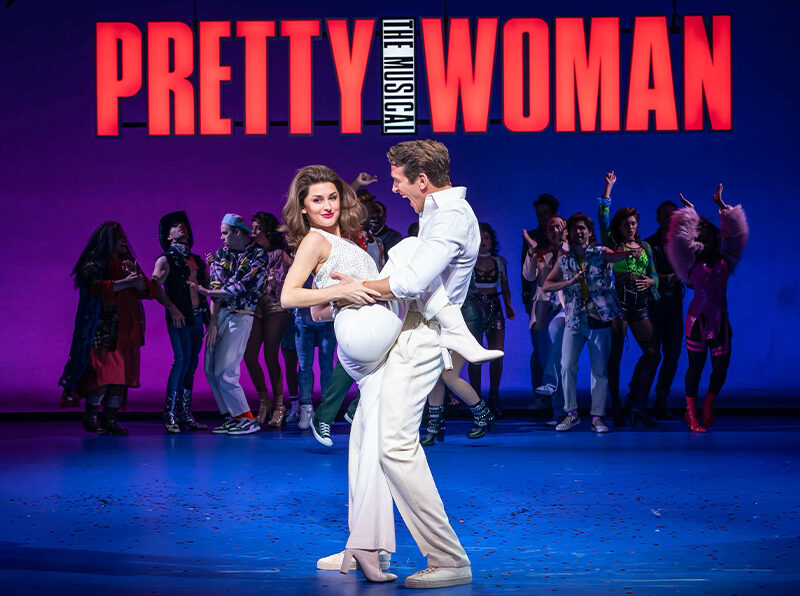The ultimate guide to Wimbledon
Wimbledon

Wimbledon is known world-wide for the tennis. Once a year, the attention of the world is focused on this area in southwest London for two weeks. The rest of the year, Wimbledon is a popular residential area with a busy town centre. It offers plenty of leafy green space and top schools, attracting wealthy families.
INTRODUCTION TO WIMBLEDON
For 150 years, the mention of Wimbledon has conjured up visions of the English summer. Blazing hot days in June, the scent of cut grass, ice clinking in a jug of Pimms dripping with condensation, the plunk of racquet strings as a ball is thwacked over the net, the call of ‘Fifteen Love’, white clothes and big sunglasses, chequered picnic rugs, hampers packed with sandwiches, pies and cakes, and juicy red strawberries piled in glass dishes and blanketed in cream.
Wimbledon tennis has an idyllic, timeless reputation which seems to strike a chord all around the world, and somehow combines winningly with its status at the summit of ultra-modern, professional tennis. How many other city suburbs have a name that is so instantly recognisable around the globe? But however important, the championship is only two weeks of the year, and only one side of life in Wimbledon. The other 50 weeks, Wimbledon remains what it has been for centuries: a peaceful haven of green, a place where town meets country, a thriving community of artists and thinkers, politicians and doctors, engineers and historians, who need to be conveniently close to the City, but choose to live up beyond the crowds and pollution of central London. It has a powerful sense of community, helped by some of the best schools in the capital, a lively cultural life, an Edwardian gem of a theatre and a unique children’s theatre, and an abundance of characterful, welcoming pubs.
Although it is now identified with tennis, Wimbledon has a rich history that stretches back millennia. The sweeping views from Wimbledon Hill over the central valley of London have been attracting people to the area for more than 9,000 years. Reigning monarchs have come to Wimbledon; a dying Henry VIII was nursed here, and Queen Victoria shot a rifle here while she was still a jolly, young, married woman. Wimbledon has been associated with scandals like the South Sea Bubble, and great political campaigns like the move to abolish slavery. The arrival of the railways at the bottom of Wimbledon Hill in 1838 caused Wimbledon to expand, with successive waves of housebuilding creating the lively, bustling area known as Wimbledon town to distinguish it from the original Wimbledon village. In the modern era, the town has attracted pop royalty like the Beatles, while the village drew sporting royalty like Bjorn Borg – and of course the heathland of the Common is the home of the Wombles. When Crossrail 2 arrives in Wimbledon, the area will enhance its status as a regional transport hub with rail, Tube, tram and bus links, ensuring Wimbledon’s future for many years to come.
Download for later
TO SEE
It can be bewildering for the sightseer to know where to start, as Wimbledon has different areas and no single public building to provide a focal point. Its charm lies in its human and domestic scale, and its architectural jewels do not clamour for attention. In fact, Wimbledon was once home to a glitzy royal palace, but it has long since been pulled down and forgotten. The oldest building, 500-year-old Wimbledon Rectory – whose former owners include Thomas Cromwell and Catherine Parr – is a private home, discreetly tucked away. St Mary’s Church, familiar to all tennis goers, incorporates beams and stone work that date back to the early Middle Ages, but wears its venerable age lightly. Sir Joseph Bazalgette, the engineer who saved London from the Great Stink, is one of the notables buried in the churchyard.
To get a feel for the true Wimbledon, the best place to start is Cannizaro House, one of the many beautiful houses built by wealthy families at the top of Wimbledon Hill, and now a luxury boutique hotel which is a perfect place for afternoon tea. The grounds are manicured, and next to them lies a landscaped public park with spreading trees and panoramic views over a valley.
On the other side of Cannizaro House stretches Wimbledon’s great glory, which is the natural heritage of the Common. Crisscrossed with trails for the dog-walker and bridlepaths for the rider, the 1,140 acre Common is a rare survival of wild heathland, home to an abundance of native species. On its fringes are a row of Bronze Age barrows (nearly ploughed up by a grumpy 19th Century landowner), and the Iron Age hill fort known as Caesar’s Camp where a trove of Roman coins was found.
To find out more about Wimbledon’s past, head to Wimbledon Museum on weekend afternoons, where 9,000 years of history is summarised. Two other museums demand a visit: one is the Wimbledon Windmill Museum, which has a wealth of quirky history. The fifth Earl Spencer helped found Britain’s National Rifle Association there, and its week-long shooting tournaments attracted everyone from royalty to unruly riffraff who drank heavily in Wimbledon’s 19 pubs. Robert Baden Powell, the founder of the Scouting movement, wrote part of his seminal Scouting For Boys in the upstairs rooms of the windmill, which now houses exhibits of rural Wimbledon life. Its cafe and car park are great starting points for a stroll.
The other essential is the Wimbledon Lawn Tennis Museum, which is the tennis fan’s best chance of a whiff of the championships outside the tournament itself. Its memorabilia date back to the first days when the club was founded – actually, as a croquet society, but it soon switched to tennis when it became trendy. All the great names are commemorated, above all the champion Fred Perry, who was once sneered at as a commoner by the gentlemen of the AELTC, his winner’s tie left draped over a chair in the changing rooms, rather than presented to him with honour.
Art lovers have plenty of choice with Wimbledon’s range of galleries: Wimbledon Fine Art, whose exhibitions change fortnightly, fashionable Clarendon Gallery, long-established Hicks Gallery and family-run Aubergine Art all sell original works, while the Norman Plaistow Gallery next to the museum hosts shows by local artists.
The most arresting building in Wimbledon is the Buddhapadipa Thai Buddhist temple, tucked away in a side road near the Common but looking as if ought to be in Bangkok. Its peaceful grounds with a small lake are ideal for quiet meditation.
Wimbledon families love to visit the nearby National Trust property of Morden Hall, to see the gardens, fields and wetland nature reserve, then call at the wonderful cafe and secondhand bookshop. The scant remains of Merton Priory, where Henry VI was crowned and Thomas a Becket trained as a priest, can be visited on summer weekends underneath a flyover in nearby Colliers Wood. Next to it, Merton Abbey Mills comes alive with shops, salons and cafes every weekend, in the leafy, riverside works where William Morris based his design and textile company, and the famous Regent Street store Liberty’s had its silk-printing works – and where the ancient waterwheel that gives the borough of Merton its symbol continues gently to turn..
TO PLAY
Wimbledon is a cultural and sporting mecca with a huge range of activities to keep adults and children entertained. There are countless ways to stay fit and healthy, from the sailing and windsurfing facilities on the artificial lake designed by Capability Brown, to the crazy golf and bowling green: all in Wimbledon Park, a former piece of the Common that was sold off and landscaped centuries ago. From fishing and rambling along the once polluted but now miraculously clean river Wandle, to horseriding across the Common from Wimbledon Village Stables, there is no shortage of outdoor sports. There are no fewer than three golf clubs on the Common – Piers Morgan is often spotted at the Royal Wimbledon club. For gyms, there is a Nuffield Health tier 1 gym in the heart of Wimbledon, and a David Lloyd gym a little out of town near Raynes Park, plus The King’s Club, an exclusive new gym in the grounds of Kings College School in the village – not to mention a number of free outdoor gyms in Wimbledon’s public parks. Of course, there is tennis – there are a number of private tennis clubs in Wimbledon, and public courts for hire in several of the town’s parks. Young children can enjoy sand and water play in Wimbledon Park, but one of the area’s best loved draws is Deen City Farm where youngsters can stroke a pet or a farm animal, and even volunteer to care for the riding ponies. When it’s raining, families gravitate towards the nearby Eddie Catz and Wacky Warehouse soft play centres.
By day Wimbledon is a varied and interesting place to shop, boasting many independent boutiques in the village, whilst in Wimbledon town Ely’s stylish department store anchors the mix of independents and the high street chains based around Centre Court shopping centre. The many excellent cafes are great for a reviving smoothie or cup of tea.
For keen readers there is an independent bookshop in the village and a branch of Waterstone’s in the town, plus Wimbledon’s airy and high-ceilinged Victorian library at the bottom of Wimbledon Hill. Tucked at the back of the library is Merton Arts Space, which hosts regular music jamming sessions and the premieres of new dramas commissioned by Merton’s Attic Theatre company.
As evening falls, pride of place must go to New Wimbledon Theatre, an elegant Edwardian venue whose basement weirdly boasts a Turkish baths. The 1,700-seat theatre opened with Jack and Jill in 1910, and still prides itself on producing some of London’s most lavish panto. Many a West End musical has received its trial run on Wimbledon’s huge stage in front of its sophisticated audiences, including the 1960 world premiere of Lionel Bart’s musical Oliver! The reclusive German diva Marlene Dietrich gave her last ever London shows at Wimbledon in 1975.
A few steps away lies the Polka Children’s Theatre, a cultural jewel which has been introducing youngsters to the delights of storytelling and drama since 1967. Polka is due to reopen in September 2020 after a major rebuild and refurbishment, offering much better facilities for families and visiting theatre companies. Another children’s venue, the Colour House Theatre – based in the only part of ancient Merton Priory that is still standing – is open at weekends at nearby Merton Abbey Mills.
Film lovers can choose between the Odeon multiplex cinema beside Wimbledon Piazza with its 2D, 3D and Imax screens, and the more intimate Curzon cinema venue round the corner which shows the week’s best releases, and hosts the Wimbledon Film Club.
After pub hours, the town has various exciting late night venues ranging from Tunnel 267 club and the CYMK, Wimbledon’s first LGBTQ club, to the Smash table tennis bar on the Broadway, on the site of the old Po Na Na nightclub.
While sports spectators associate Wimbledon with tennis, local fans have been equally gripped by the travails of AFC Wimbledon (the Wombles), the town’s football team which was due finally to come home to a purpose-built stadium in Wimbledon in autumn 2020, after a massive fundraising effort. The return ends 18 years of hurt, after the club was exiled and controversially split, with a splinter club called the MK Dons playing 60 miles away in Milton Keynes.
Wimbledon is lucky to have several annual arts festivals of the highest quality. Wimbledon Bookfest, run by the fantastic Fiona Razvi and co-founded by Time & Leisure founder Tony Kane, attracts the big names of the book world to the two huge tents on the Common for two weeks every October, and runs comedy nights and guided walks around the homes of Wimbledon’s surprisingly large number of 18th and 19th Century political radicals. BookFest also boasts a busy programme of schools outreach work. In November it is the turn of Wimbledon International Music Festival, which attracts soloists and ensembles of international calibre. Anthony Wilkinson, who runs the music festival, is leading a campaign to build a community arts hub with a state of the art concert hall in the heart of Wimbledon.
TO EAT
They say that more than 27 tons of strawberries are served up in Wimbledon during the tennis fortnight, smothered in 7,000 litres of cream, which must make strawberries and cream the official food of Wimbledon. The All England Lawn Tennis Club has been subsidising the price for years so that patrons of the tennis can carry enjoying the traditional treat for £2.50 a bowl – the same price as in 2010.
But hungry tennis players and tennis viewers can’t live on strawberries alone – and they don’t have to, because there is a myriad of fine dining restaurants, high end cafes and exotic eateries, delicatessens and street food markets, all within a short stroll of the All England Club.
One of the longest established is San Lorenzo Fuoriporta on Wimbledon Hill, opened in 1969 by celebrity restaurateurs Lorenzo and Mara Berni, and still run by their sons Ghigo and Paulo. The Bernis set the bar high for other fine dining destinations in the area, training up their staff to prepare all their pasta and sauces freshly from scratch, and San Lorenzo is still the place where you’re most likely to spot tennis gods like Boris Becker or the Williams sisters grabbing a bite in the conservatory or on the terrace. You will also eat royally in the Light House, Holy Smoke and many other local fine dining restaurants.
Up the hill in Wimbledon village are some excellent locations for celebrity spotting, with the Ivy Cafe on the corner of Church Road a magnet all year round for Wimbledon’s famous faces like Ant McPartlin and celebrity chef Marcus Wareing. The conservatory at the back of Cannizaro House Hotel du Vin, with its views of manicured grounds, is a perfect destination for afternoon tea followed by a stroll in the nearby Cannizaro park.
Wimbledon is such a cosmopolitan destination for diners that Love Wimbledon, which promotes the town’s businesses, is compiling a guide to eating your way around the world without leaving the town centre. Starting with Aya restaurant near South Wimbledon tube (Lebanon), diners can work their way round Diba (Iran), Confucius (China), Sticks ’n’ Sushi (Japan), Mai Thai (Thailand), Roxie (South Africa), Maison St Cassien and The White Onion (France), The Adego (Spain) and Al Forno (Italian), then head to the Americas at Waffle Jacks (America), Wahaca (Mexico) and Changos Empanadas (Argentina). You can even sample some Georgian home cooking at Merton Wine Bar, or sate your sweet tooth with a sumptuous Belgian snack from Wafflemeister (try the banana and salted caramel waffle, it’s divine).
Putting together a picnic is a breeze with independent grocer Bayley & Sage and branches of the Paul and Gail’s bakeries on Wimbledon High Street. Down in Wimbledon town, there are a trio of fantastic, authentic Italian delis that are a must for all foodies. La Bottega del Pane on Kingston Road and the Paneterria Italiana on Merton Park Parade both bake their own bread and pastries, and Vallebona a little further out on Weir Road imports sumptuous Italian and Japanese food and wines. In particular, don’t miss Rocco Tanzanella’s fabulous artistic creations in chocolate every Easter at La Bottega. No talk of foodie hotspots would be complete without a mention of Wimbledon Farmer’s Market every Saturday and Wimbledon Village Farmer’s Market every Sunday.
One weekend a month between March to November the Piazza in central Wimbledon comes alive with a feast of street food at the Market run by Love Wimbledon – don’t miss the authentic souvlaki from Little Greece or the pastel de nata custard tarts from LusoBrazil – while at nearby Merton Abbey Mills every weekend you can choose from a plethora of cuisines from Belgium to Jamaica, and browse a mini farmer’s market.
TO DRINK
A hostelry called The Sign Of My Lord’s Arms is recorded in Wimbledon village as far back as 1617, on the site of what is now The Dog and Fox, which probably makes it the oldest pub in the village. The lord in question was Thomas Cecil, the 1st Earl of Exeter, who was the Lord of the Manor of Wimbledon, and his arms (his heraldic badge) were six lions rampant on a background of blue and silver stripes. The blue and white stripes found their way into the original team colours of Wimbledon FC.
Situated a little closer to the Common, the Rose and Crown can boast a continuous history that is nearly as long, as a pub called the The Sign of the Rose existed there in 1650 during the interregnum period when Oliver Cromwell ruled England as Lord Protector. After the monarchy was restored in 1660, the pub loyally changed its name to the Rose and Crown, and continues its tradition of cosy fires and a warm welcome to this day.
As Britain prospered in the 18th and 19th centuries the Dog and Fox thrived as a coaching inn, a place where weary travellers could stop to refresh themselves on the main road from London to Portsmouth, while their driver changed to fresh horses. These days it’s one of the places where tennis professionals let their hair down, with a memorable appearance from Australian singles player Nick Kyrgios at the bar in 2019, the night before he was due to face Rafael Nadal. There is another historic coaching inn down the hill in Wimbledon town called the Prince of Wales, still going strong today, which in times past was reputed to be a hangout for the highwaymen who operated on Wimbledon and Putney Commons.
Wimbledon village has been a haven for people who enjoy a tipple since the mid 19th Century, when it boasted two breweries and no fewer than 19 pubs. Some drinking establishments with evocative names like The Baldfaced Stag and The Jolly Butchers have passed into history, but other historic pubs are still flourishing and are well used by local people and tennis visitors, including the Fire Stables (try its signature cocktail, the Smoky Bacon Bloody Mary), the Swan, the Crooked Billet and the Hand in Hand.
In the 1840s a man called William Watney ran the Wheatsheaf Brewery next to the Crooked Billet pub. His descendants went on to found the famous Watney brewery empire with its red barrel symbol. The other local source of beer, the Wimbledon Brewery, was set up by William Cook on Wimbledon High Street in 1832, and moved by new owner William Quartermaine into state-of-the-art, brick-built premises in 1880. Unfortunately the new brewery burned down just nine years later, in 1889; but luckily for SW19 and drinkers everywhere, a brand new Wimbledon Brewery was set up by Mark Gordon in June 2015, and produces tasty Quartermaine IPA and Phoenix Porter (to commemorate the 1889 fire), plus Copperleaf Red Ale and Common Pale Ale whose names reflect the area’s natural heritage. Mark likes to say that the new Wimbledon Brewery is built on the site of Merton Priory, the powerful medieval religious establishment where monks expertly brewed beer for 400 years from the early 12th Century.
These days drinkers remain spoiled for choice, both in Wimbledon Village, where Hemingways cocktail bar has become a local institution, and also in Wimbledon town. Traditional town pubs like the Alexandra, the Old Frizzle and the Hand and Racquet have moved with the times; Smash on Wimbledon Broadway allows you to combine a sociable drink with a game of table tennis; and the recent addition of 601 Queen’s Road above Centre Court shopping centre has helped to project a smart, urban atmosphere. Wimbledon hasn’t produced a gin distillery yet, but Graveney Gin produced in neighbouring Tooting is widely enjoyed.
WIMBLEDON KNOWLEDGE
When the pop impresario Simon Cowell bought a house in Wimbledon village in 2018, he said that the thing that attracted him to the area above anything else was the excellent quality of local schools for his son, Eric. Leading the field is King’s College School, a boys’ school in impressive, redbrick buildings that was founded in 1829 on the edge of Wimbledon Common. King’s, also known as KCS, has a worldwide reputation and was recently named by The Sunday Times as the top boys’ and co-ed school in London for the third year in a row. It takes girls in the sixth form.
Wimbledon also boasts two voluntary-aided Catholic state schools with strong academic reputations, the Jesuit-run boys’ school Wimbledon College and Ursuline High School for girls, which have worked in partnership since 1986. Wimbledon’s two state secondary schools – also single sex – are Rutlish School for boys and Ricards Lodge school for girls, both recently rated as outstanding by Ofsted. For primary age pupils The Study is a highly regarded prep school near the Common.
Wimbledon has a habit of winding its way into people’s hearts. The village has one of the loveliest high streets in London, with a mix of designer and independent shops in period buildings that in some cases date back hundreds of years. It has the feel of small and friendly market town. On a Sunday when the farmer’s market is on, riders from the Wimbledon Village Riding Stables amble past and neighbours stop to chat, you could imagine yourself in a leisurely, 19th Century time warp.
Indeed the village is pervaded by a sense of history, from the extraordinary and quirky things that have happened here. An anonymous Roman legionary buried a pot of coins in the Iron Age hill fort on Wimbledon Common known as Caesar’s Camp. A dying Henry VIII stayed several days in Wimbledon Rectory in the final year of his life, being nursed by his wife Catherine Parr when he was too ill to travel. The 18th Century It girl Georgiana, Duchess of Devonshire (played by Keira Knightley in the film The Duchess), was married at St Mary’s Church in Wimbledon, a day earlier than publicly announced to avoid the ceremony being mobbed by gawpers. The future prime minister William Pitt attended drinking sessions next to the Common with Cabinet cronies. Britain’s National Rifle Association was founded in Wimbledon during a period of French invasion fears, and held its first ever shooting competition – the forerunner of Bisley – next to the Wimbledon Windmill in 1859, having persuaded no less a person than Queen Victoria to fire the first shot. One of the early pioneers of flight, Jean Baptiste Passat, used Wimbledon Common to trial his wing-flapping ornithopter aircraft, the Seagull, in 1912 ,reportedly managing to fly 450ft before he crashed into a tree.
It is an area with a strong sense of community, which is strengthened every October when Wimbledon BookFest pitches its tents on the Common and some of the most high profile writers in Britain turn up to discuss their new books; and also when the Wimbledon International Music Festival runs its inspiring concerts in November. Both festivals are growing, and are run by passionate Wimbledon entrepreneurs for the benefit of the local community.
Love of the arts unites the hundred or more amateur singers who belong to Wimbledon Choral Society, giving soul-stirring recitals several times a year. It also brings out impressive audiences for the borough’s professional arts companies, including the Sonoro choir whose annual Christmas carol concert is a highlight of the year; Attic Theatre, which commissions new dramas from young playwrights; and Baseless Fabric Theatre, which performs opera in the street and in the community.
Looking to the future, Wimbledon town is preparing itself for a radical facelift at its heart when Crossrail 2 arrives in a few years’ time. A new tram line is also planned. With its fantastic existing transport links by overland rail, Tube, tram and bus, Wimbledon station is already the 21st busiest in the country. That rating is only likely to climb as Wimbledon town continues to expand. Wimbledon people care passionately about their environment, and a discussion is in progress between Labour-led Merton Council and local residents about how to protect Wimbledon’s distinctive personality from future developers. Wimbledon is a precious place and it has plenty of champions who want to ensure that it stays that way.
Wimbledon Time & Leisure magazine
Time & Leisure magazine began life in Wimbledon in 1997. Tony Kane founded a bi-monthly ‘Arts in Wimbledon’ title and it soon became a flourishing family business. His daughter Lucy Kane was one of the founding team and it became the local lifestyle magazine for Wimbledon and Putney. It was published from Tony’s home in Wimbledon for the first five years until Lucy took over the publication in 2002. She created the brand we are familiar with today and launched it into a monthly lifestyle magazine. She expanded the portfolio, launching new editions in Clapham, Battersea, Fulham, Kingston and Surrey as well as the website. It remains the number one lifestyle magazine for SW London and Surrey, delivered to high net worth residential homes every month.
Find out about advertising in Wimbledon Time & Leisure magazine: www.timeandleisuremedia.co.uk







